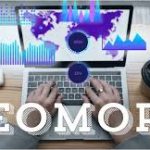Introduction
Education has undergone a remarkable transformation over the years, shifting from traditional chalk-and-talk methods to immersive digital experiences. This evolution of educational technology has significantly impacted teaching and learning, making education more accessible, engaging, and effective.
The Early Days: Chalkboards and Textbooks
Chalkboards
Chalkboards were the cornerstone of classrooms for centuries. Teachers used them to illustrate concepts, create diagrams, and engage students in discussions. Despite their simplicity, chalkboards played a crucial role in interactive learning.
Textbooks
Textbooks complemented chalkboards, providing structured content for students. They served as the primary source of information and reference, guiding lessons and reinforcing classroom learning.
The Advent of Audio-Visual Aids
Overhead Projectors
The introduction of overhead projectors marked the beginning of integrating technology into education. Teachers could present information visually, enhancing understanding and retention.
Educational Films
Educational films provided dynamic content delivery, making complex topics more digestible. They offered visual context and brought real-world scenarios into the classroom, fostering engagement.
The Computer Revolution
Personal Computers in Classrooms
The arrival of personal computers in the 1980s revolutionised education. Schools began incorporating computers into their curricula, offering courses on basic computing and programming.
Educational Software
Educational software emerged, providing interactive learning experiences. Programs focused on mathematics, language arts, and science, allowing students to learn at their own pace and reinforcing concepts through practice.
The Internet Era
Online Resources
The internet’s rise opened a vast array of online resources for both teachers and students. Websites, forums, and online libraries became essential tools for research and learning, expanding the boundaries of traditional education.
E-Learning Platforms
E-learning platforms, such as Moodle and Blackboard, facilitated online courses and distance learning. These platforms provided structured environments for course delivery, assignments, and assessments, making education accessible to a broader audience.
The Rise of Interactive Learning Tools
Smartboards
Smartboards replaced traditional chalkboards, offering interactive displays that teachers could use to present multimedia content, annotate lessons, and engage students in interactive activities.
Tablets and Mobile Devices
Tablets and mobile devices became prevalent in classrooms, providing access to a wide range of educational apps and resources. These tools supported personalised learning, allowing students to explore subjects at their own pace.
Gamification
Gamification introduced game elements into education, enhancing motivation and engagement. Educational games and apps made learning fun, encouraging students to participate actively and achieve their goals.
The Impact of Artificial Intelligence
Personalised Learning
Artificial intelligence (AI) has transformed personalised learning. AI-driven platforms analyse student performance and adapt content to meet individual needs, providing tailored learning experiences.
Virtual Tutors
Virtual tutors powered by AI offer additional support to students, providing explanations, answering questions, and offering practice exercises. These tutors make learning more accessible and personalised.
The Role of Virtual and Augmented Reality
Virtual Reality (VR)
Virtual reality immerses students in simulated environments, offering experiential learning opportunities. From exploring historical sites to conducting virtual science experiments, VR enhances understanding through hands-on experiences.
Augmented Reality (AR)
Augmented reality overlays digital information onto the real world, creating interactive learning experiences. AR applications enhance subjects like biology and geography by bringing static images to life, making learning more engaging and memorable.
The Challenges of Educational Technology
Digital Divide
Despite the advancements, the digital divide remains a challenge. Not all students have access to the necessary devices and internet connectivity, creating disparities in educational opportunities.
Teacher Training
Effective integration of technology requires proper teacher training. Educators must be equipped with the skills to use new tools effectively and adapt their teaching methods to leverage technology’s benefits.
Screen Time Concerns
Increased screen time raises concerns about its impact on students’ health and well-being. Striking a balance between technology use and traditional learning methods is essential to ensure holistic development.
Future Prospects of Educational Technology
Artificial Intelligence and Machine Learning
The future of educational technology lies in AI and machine learning, which will continue to personalise learning experiences, automate administrative tasks, and provide deeper insights into student performance.
Blockchain in Education
Blockchain technology has the potential to revolutionise education by providing secure and transparent records of student achievements, certifications, and course completions, enhancing the credibility of online education.
Lifelong Learning
As technology evolves, the emphasis on lifelong learning becomes more critical. Educational technology will play a pivotal role in providing continuous learning opportunities, enabling individuals to upskill and adapt to changing job markets.
Conclusion
The journey from chalk dust to digital realms reflects the incredible transformation of educational technology. While challenges remain, the benefits are undeniable. By embracing technology, educators can create engaging, inclusive, and effective learning environments, preparing students for the demands of the future. As we continue to innovate, the potential for educational technology to shape the future of learning is limitless.
SEO Meta Description
Explore the transformation of education from traditional methods to digital innovations. Discover how educational technology has evolved, impacting learning and teaching.
SEO Title
From Chalk Dust to Digital Realms: The Evolution of Educational Technology
SEO Slug
from-chalk-dust-to-digital-realms-evolution-of-educational-technology










Leave a Reply